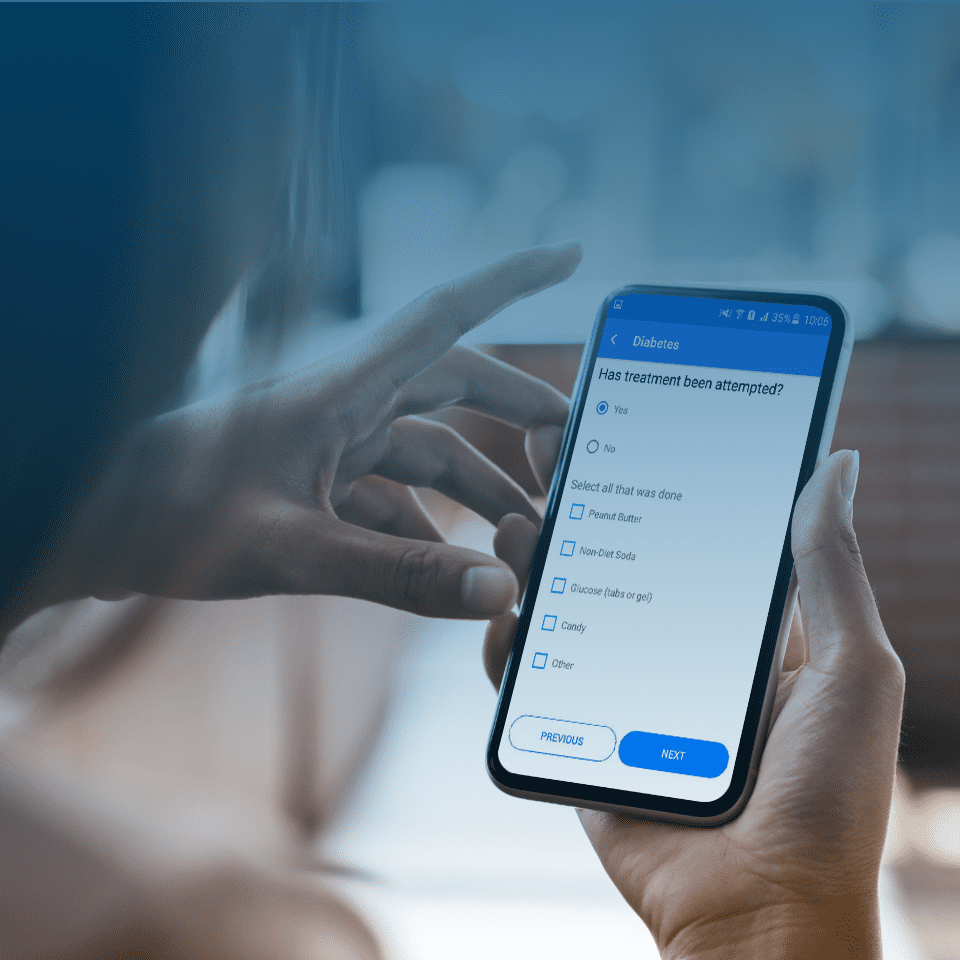What is Mobile Health, and How Does It Fit into Digital Health?
Digital health or telehealth is an umbrella term covering all aspects of technology used to improve healthcare delivery. From software and applications to medical devices, there are numerous ways in which technology can aid us. We commonly use it for remote patient monitoring and enhancements to home care. After all, there are many benefits to interconnectedness and seamless communication between patients and clinicians. That is why mHealth became an integral part of telemedicine and healthcare solutions.
Telehealth and Mobile Health
As we mentioned above, telehealth refers to healthcare delivery using technology. However, using mobile or any at-home technologies, such as computers or PDAs, belongs to the subset of the broader digital health concept.
The World Health Organization defines mobile health as: “medical and public health practice supported by mobile devices, such as mobile phones, patient monitoring devices, personal digital assistants (PDAs), and other wireless devices.”
This technology was meant to assist individuals and allow them to take a more active role in their health. Since then, the industry has rapidly evolved, giving us a broad spectrum of wearable medical devices, smart clothes, and other technological aids. Mobile health technology found its place in overall digital health, much like most of these technologies have since been integrated into different EHRs, giving clinicians and patients fuller pictures of their health histories.
MHealth Market
In 2021, the global market size for this technology was valued at $50 billion, with expectations of rapid growth until 2030. Several reasons made this possible: people are turning more towards healthier lifestyles, connecting their mHealth apps with other software, and using smart devices and wearables to keep track of their vitals and make adjustments accordingly. Furthermore, following the COVID-19 pandemic, it became evident that we needed to find ways to improve our healthcare delivery without visiting our medical practice and potentially spreading diseases in the waiting room.
While this technology was initially frowned upon due to lack of standardization and inaccurate data, government initiatives, improvements, and growing awareness of its benefits made mobile health solutions a viable addition to healthcare.
In the post-COVID world, the statistics show a massive spike in the utilization of telehealth technologies. Consumer adoption has increased from 11% in 2019 to a 46% acceptance rate by May 2021.
Additionally, providers weren’t immune to the industry's changing landscape: US health practitioners saw a surge in the number of their patients and, post-COVID, are seeing 50 to 175 more patients than before the pandemic.
Mobile health applications also saw an increase in investments: during the first three-quarters of 2021, investors made over 250 digital health deals as the industry gained traction during the pandemic. As this industry expands, privacy concerns are raised, and IoT security presents an ongoing challenge continually addressed as we move forward.
Benefits of mHealth
As of August 2022, there are 6.6 billion smartphone users worldwide, which means that 83% of the population owns a smartphone. MHealth has thus penetrated most of the world, allowing people across the globe to enjoy the perks of this technology. Further, the number of devices connected to the Internet of Things is close to 11 billion, suggesting that there are more virtually connected devices than people worldwide.
Such high numbers suggest that this is a market worth exploring: not only for the lucrative opportunities but also to improve the lives of patients and clinicians alike. Below are some of the benefits of mobile healthcare technology:
Faster Care
With these technologies, patients are always mere clicks away from their clinical histories. Further, wearables and health apps allow patients to track their vitals and clinical progress in real-time and turns them into activated patients.
Improved Adherence
Studies show that increased patient engagement leads to better clinical results. Incorporating medical software and similar tech into your practice will make your job easier and improve the satisfaction rate among your patients.
Better Clinical Workflow
Healthcare mobile technology is merely one facet of the rapidly expanding health universe. By allowing your patients to monitor their health, you are decreasing the workload of people involved with your practice: as opposed to spending hours on the phone with patients, your staff can devote their time elsewhere. This leaves more time to deal with other health-related issues and decreases clinical costs.
Improves Communication Between Patients and Providers
Instead of sitting in the waiting room to be examined by your practitioner, mHealth allows patients to maintain regular, remote communication with their care provider without burdening your staff or organization with visits that could have been an email.
Challenges
Like with any industry, there are several challenges related to implementing this technology. Most importantly, interoperability in healthcare is a must. Vicert devoted a lot of time to developing healthcare integration services.
From there, your applications must be HIPAA-compliant. Mhealth increases the risk of cybersecurity attacks. Ensure that your software developers know to adequately develop and secure your applications for your organization's and your patient's safety.
Luckily, Vicert has the necessary knowledge to help you identify the software you need and develop it with your exact specifications.
Check out some of our successful solutions below and book a call with us for more information!




